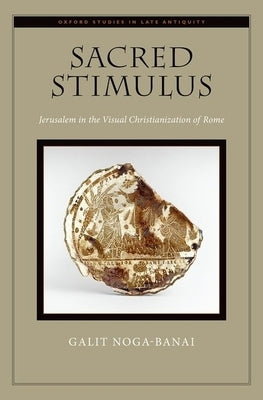1
/
of
1
Oxford University Press, USA
Sacred Stimulus: Jerusalem in the Visual Christianization of Rome
Sacred Stimulus: Jerusalem in the Visual Christianization of Rome
Regular price
$100.00 USD
Regular price
Sale price
$100.00 USD
Shipping calculated at checkout.
Quantity
Couldn't load pickup availability
Sacred Stimulus offers a thorough exploration of Jerusalem's role in the formation and formulation of Christian art in Rome during the fourth and fifth centuries. The visual vocabulary discussed by Galit Noga-Banai gives an alternative access point to the mnemonic efforts conceived while Rome
converted to Christianity: not in comparison to pagan art in Rome, not as reflecting the struggle with the emergence of New Rome in the East (Constantinople), but rather as visual expressions of the confrontation with earthly Jerusalem and its holy places. After all, Jerusalem is where the formative
events of Christianity occurred and were memorialized. Sacred Stimulus argues that, already in the second half of the fourth century, Rome constructed its own set of holy sites and foundational myths, while expropriating for its own use some of Jerusalem's sacred relics, legends, and sites. Relying upon well-known and central works of art, including mosaic decoration, sarcophagi, wall paintings, portable art, and architecture, Noga-Banai exposes the omnipresence of Jerusalem and its position in the genesis of Christian art in Rome. Noga-Banai's consideration of earthly Jerusalem as a
conception that Rome used, or had to take into account, in constructing its own new Christian ideological and cultural topography of the past, sheds light on connections and analogies that have not necessarily been preserved in the written evidence, and offers solutions to long-standing questions
regarding specific motifs and scenes.
Author: Galit Noga-Banai
Publisher: Oxford University Press, USA
Published: 07/02/2018
Pages: 256
Binding Type: Hardcover
Weight: 1.19lbs
Size: 9.30h x 6.30w x 0.70d
ISBN: 9780190874650
converted to Christianity: not in comparison to pagan art in Rome, not as reflecting the struggle with the emergence of New Rome in the East (Constantinople), but rather as visual expressions of the confrontation with earthly Jerusalem and its holy places. After all, Jerusalem is where the formative
events of Christianity occurred and were memorialized. Sacred Stimulus argues that, already in the second half of the fourth century, Rome constructed its own set of holy sites and foundational myths, while expropriating for its own use some of Jerusalem's sacred relics, legends, and sites. Relying upon well-known and central works of art, including mosaic decoration, sarcophagi, wall paintings, portable art, and architecture, Noga-Banai exposes the omnipresence of Jerusalem and its position in the genesis of Christian art in Rome. Noga-Banai's consideration of earthly Jerusalem as a
conception that Rome used, or had to take into account, in constructing its own new Christian ideological and cultural topography of the past, sheds light on connections and analogies that have not necessarily been preserved in the written evidence, and offers solutions to long-standing questions
regarding specific motifs and scenes.
Author: Galit Noga-Banai
Publisher: Oxford University Press, USA
Published: 07/02/2018
Pages: 256
Binding Type: Hardcover
Weight: 1.19lbs
Size: 9.30h x 6.30w x 0.70d
ISBN: 9780190874650
About the Author
Galit Noga-Banai of the History of Art Department at The Hebrew University of Jerusalem is the author of The Trophies of the Martyrs: An Art Historical Study of Early Christian Silver Reliquaries (OUP 2008).
Share


